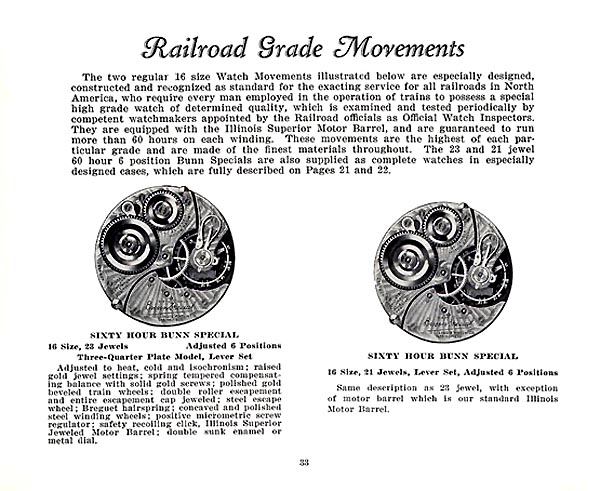
| WWT Shows | CLICK TO: Join and Support Internet Horology Club 185™ | IHC185™ Forums |

|
• Check Out Our... • • TWO Book Offer! • |
Welcome Aboard IHC185™  Internet Horology Club 185
Internet Horology Club 185  IHC185™ Discussion Site Main Page
IHC185™ Discussion Site Main Page  Horological Discussions, Questions and Answers
Horological Discussions, Questions and Answers  Pocket Watch Discussions
Pocket Watch Discussions  Bunn Special Case Question
Bunn Special Case Question
 Internet Horology Club 185
Internet Horology Club 185  IHC185™ Discussion Site Main Page
IHC185™ Discussion Site Main Page  Horological Discussions, Questions and Answers
Horological Discussions, Questions and Answers  Pocket Watch Discussions
Pocket Watch Discussions  Bunn Special Case Question
Bunn Special Case QuestionRelated Content: Illinois Watch Company Research Forum
Go  | New Topic  | Find-Or-Search  | Notify  | Tools  | Reply to Post  |  |
| IHC Member 1110 |
On page 17 of Roy Ehrhardt's 1976 price indicator book,picture #1 shows a 60HR Bunn Sp'l. in a nickel swing ring case.Would anyone know if that was a factory-marked Bunn Special case?If so, that must be about the rarest B.S. case there is.I always thought that at that time (1928), they were sold cased only.Thanks!  | ||
|
| IHC President Life Member |
Hello Ted, I dropped a copy of the advertisement you mentioned into your post so others can see what we are discussing. Roy Ehrhardt's Price Indicators are a great resource and I really love the ads, but we also have to do a bit of sorting out on some of them. In this particular advertisement Ehrhardt added the "$160.00" as his estimated 1976 value, the item number (1) for this watch and finally the "1928 John Plain" reference which is important to understand. Apparently John Plain was a watch retailer who wrote his own ad copy as shown by "9-Adjustments" which is a line Illinois did not use in their ads. Here is what matters, in 1928 it was still possible to obtain both 21 and 23-Jewel Bunn Special movements as a movement only which would then be cased by the retail jeweler. That is what we are seeing in this instance with the John Plain advertisement. Note the big difference in retail price, the same 21-Jewel Bunn Special movement factory cases in a Wadsworth First Model Bunn Special Gold-Filled Case is $86.30 but with the Nickel Swing-Ring Case a $70.80 amount... "you get what you pay for" ...is the bottom line. Of course the whole point of factory cased and timed watches resulted in a better fitting, more accurate timekeeper with the bonus of more profit for the manufacturer. Being able to offer the alternative of a nickel case allowed the retailer to offer what amounts to a bargain price for a tough-as-nails watch. This is a very good topic because it helps illustrate that through 1929 movements could still be obtained and cased by the retail jeweler. On page 49 of the Illinois Encyclopedia" the late Bill Meggers wrote that in 1929... "As of this year Bunn Specials were no longer offered un-cased" ...where he should have said "After this year..." to be more precise. That is the reason we cannot say "WRONG!" when a 1920s Bunn Special, a Hamilton 992 or for that matter 950 shows up in a period-correct after-market case but, of course a correct, original appearing factory cased combination will always command a significantly higher price. Topics like this make us think a little deeper, thanks for the great question. The image shown below this post is from page 33 of the 1928-29 Hamilton-Illinois Factory Catalog. Lindell Sixty-Hour 23J and 21J Movement Only in 1928-29 Catalog...  | |||
|
| IHC Member 1110 |
Thanks for the great info, Lindell.I had a suspicion that it wasn't a factory case, but I didn't know that at that time you still could buy just the movement.It's really great to have this website to be able to ask questions and get such prompt and thorough answers.I guess we're all learning! | |||
|
| Powered by Social Strata |
| Your request is being processed... |
|
©2002-2025 Internet Horology Club 185™ - Lindell V. Riddle President - All Rights Reserved Worldwide

